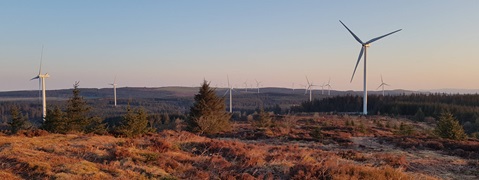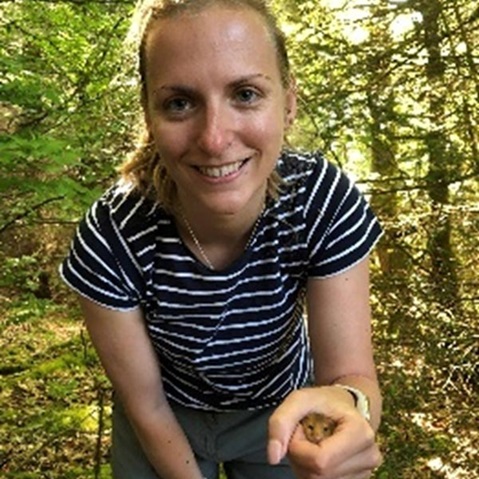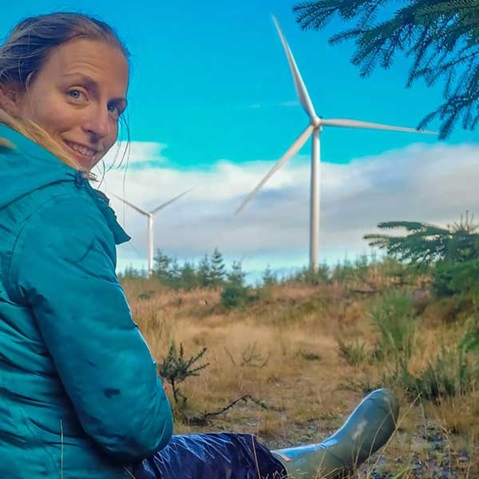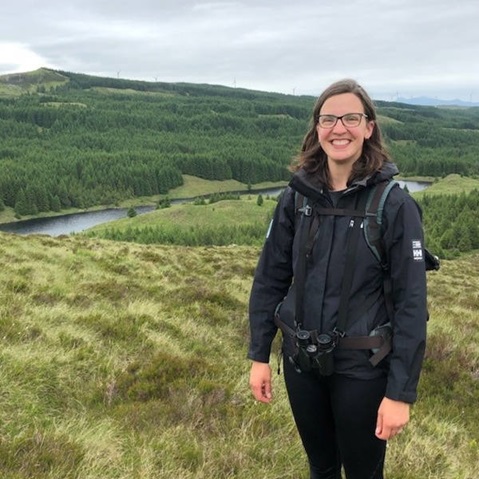



Charlotte Armitage conducted a PhD study funded by RWE on the ecology and conservation of the Hazel Dormouse (Muscardinus avellanarius).
Both renewable energy and biological diversity are crucial for the future of our planet. However, the construction and generation of renewable energy can have an adverse impact on nature.
So what is RWE doing to ensure that our business activities have as little impact on wildlife and ecosystem health as possible?
A great example is at RWE’s largest onshore wind farm in the UK, Clocaenog Forest, where the wind farm’s Habitat Management Plan helps nature to not only survive, but thrive alongside our energy projects.
As well as being our biggest onshore wind farm in the UK, it’s also the one with the biggest ‘Aww’ factor as it’s where Charlotte Armitage led a study on the ecology and conservation of a rare creature – the dormouse, and specifically the Hazel Dormouse (Muscardinus avellanarius).
Clocaenog Forest is a commercial conifer plantation and is not a ‘typical’ site for the dormouse as they are thought to prefer native broadleaf habitat. However, they seem to subsist here.

“One of our key findings challenges existing conservation efforts” said Charlotte. “It was thought that the dormouse primarily eat specific plants found in broadleaf woodlands, shaping conservation strategies around protecting these areas. However, this study has revealed that in both conifer and broadleaf woodlands the dormouse will adapt their diet based on locally available food. This suggests that conservation efforts shouldn’t focus solely on protecting specific plant species in certain habitats, but should consider a wider range of environments where the dormouse can thrive.”
Charlotte Armitage conducted a PhD study funded by RWE
Charlotte investigated dormouse diets using fur samples she collected on site. These samples will be compared to dormouse from ‘optimal’ habitat locations to further our understanding of how they are able to survive at sites such as Clocaenog Forest.
A unique method used in the study involved setting up tunnels with ink pads to detect the presence of the dormouse. “These small mammals leave distinctive footprints, allowing us to identify their habitats accurately” continued Charlotte.
By using footprint tunnels, Charlotte discovered three new areas where dormouse were previously thought to be absent on site. Highlighting these new areas will allow Natural Resources Wales and RWE to effectively manage operations in these areas, further contributing to their conservation.
A significant observation made by Charlotte is the dormouse's tendency to enter a state of torpor, a kind of mini-hibernation, during periods when they are expected to be active and breed, especially between April and October. This behaviour is more common in colder, wetter conditions, which are prevalent at Clocaenog Forest, leading to a reduced breeding rate.
Thanks to Charlotte’s findings and climate forecasts we can predict that the dormouse will enter torpor less as the UK gets warmer. So hopefully the number at Clocaenog Forest will continue to rise. However, climatic extremes, such as really wet or dry seasons, are still a concern and could result in high torpor states.

“The study was an absolute privilege to be a part of, from the very earliest conversations on the feasibility of such an undertaking by RWE, to now, with the huge milestone of the submission of Charlotte’s dissertation. This was new territory for us in the UK Onshore Wind team, but it has been a huge success, thanks to Charlotte’s determination, commitment and sheer hard work both in the field and at the laptop.”
Kristen Liptrot is OPEA’s Environmental & Ecological Manager in the UK

